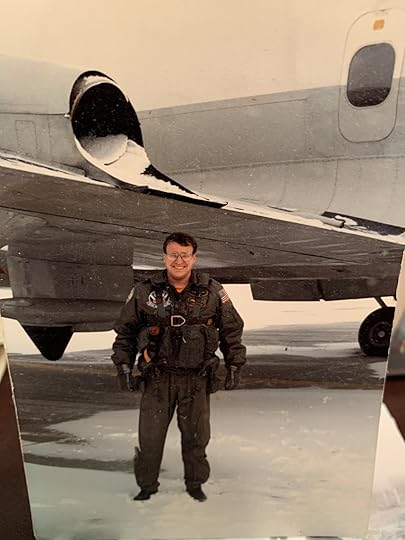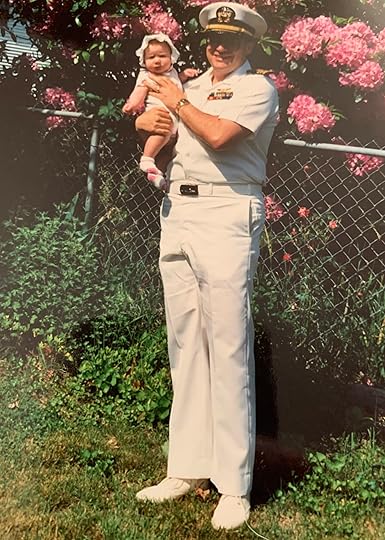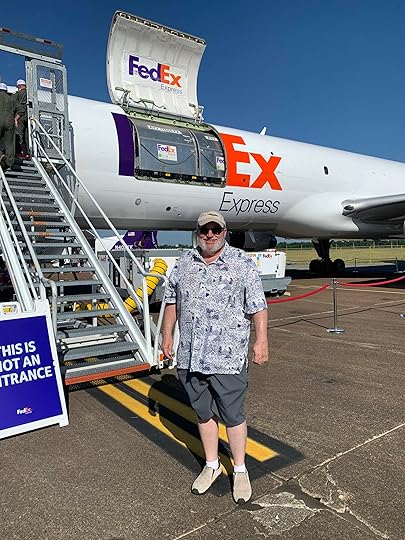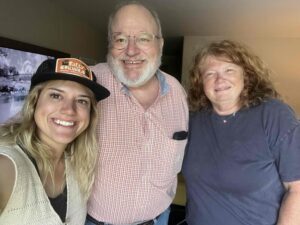Lieutenant Commander Thomas M. Dean, Jr., U.S. Navy (Retired) – Patrolling the Skies and the Seas to Keep Us Safe
Most of us work over forty years before retiring. Devoting that length of time to our careers makes finding a job we enjoy important. For some, it can take years of trial and error in different fields before finding the right fit. For Lieutenant Commander Thomas M. Dean, Jr., U.S. Navy (Retired), the answer became clear long before he entered the workforce—he needed to be part of naval aviation. Getting there required hard work and dedication, but, once he achieved it, naval aviation brought him a lifetime of happiness, especially through the many outstanding people he met and worked with.
Tom’s father, Thomas M. Dean, Sr., enlisted in the Navy in October 1940 and was at Pearl Harbor when the Japanese attacked on December 7, 1941. During the war, he flew in Navy patrol aircraft in the Pacific theater. Afterwards, he stayed in the Navy and took an assignment at Naval Air Station Jacksonville, Florida, where he met Helen “Bonnie” Perelli. Bonnie’s fiancée, the radio officer on the troop transport SS Dorchester, had been killed in 1943 when a German U-boat torpedoed and sank the ship. After his death, Bonnie moved from Philadelphia to Jacksonville to work in an aircraft factory and start her life over. Then she fell in love with Tom Sr., and they married in January 1945. They had their first child, Joan, in 1947.
The couple’s second child, Tom Jr., was born in 1958 when Tom Sr. was assigned as the maintenance chief for VF-124, a Navy fighter squadron based at Naval Air Station Miramar in San Diego, California. A year later, the family moved to Monroe, Louisiana, where Tom Sr. served for three years as a Navy recruiter. From there, they moved to Naval Air Station Patuxent River, Maryland, where Tom Sr. worked on a new type of long-range anti-submarine and reconnaissance patrol aircraft called the P-3 Orion. When Tom Jr. was four years old, he went with his dad to work and got to go on one of the new four-engine turboprop P-3s, where even the smell of the big airplane seemed inviting to him. Thus began Tom Jr.’s lifelong love of naval aviation.
In 1965, Tom Sr. moved the family to Naval Air Station Memphis in Millington, Tennessee, for his final tour. He retired there in 1970 as a master chief petty officer, the Navy’s highest enlisted rank, having served for thirty years. After he retired, the family stayed in Millington, which is where Tom Jr. (hereafter “Tom”) grew up and called home.
Tom attended Millington Central High School. He broke his leg during his sophomore year, which kept him out of most outside activities, especially sports. Once he recovered during his junior year, he began working at a local veterinary clinic, where the supervising veterinarian let him get involved in all aspects of animal care, including lab work, surgeries, and x-rays. One day when he was assisting the veterinarian with a Cesarian section on a cow, the Navy Blue Angels flew by low overhead as they practiced for their weekend air show in Memphis. At that moment, Tom knew he had to follow in his father’s footsteps and become part of naval aviation.
After graduating from Millington Central in 1976, Tom enrolled in the University of Tennessee (UT) Martin pursuing a degree in agriculture. When he learned he could participate in Navy ROTC (Reserve Officer Training Corps) at the University of Mississippi (“Ole Miss”), just an hour away in Oxford, Mississippi, he transferred there in 1977. Unfortunately, Ole Miss would not accept the class credits he had earned at UT Martin, so he had to start earning his degree from scratch.
 Tom Dean standing under the wing of a P-3 Orion
Tom Dean standing under the wing of a P-3 OrionTom loved his time at Ole Miss. Because he was not part of the fraternity scene, the other members of the Navy ROTC unit became his closest friends. Together they learned what they needed to know to become Navy officers, and they formed strong bonds of friendship that continue today. Over the summers, the Navy sent Tom and the other ROTC participants, referred to as “midshipmen,” to operational Navy units to acquaint them with the Navy, its mission, and its sailors. Tom’s favorite trip was his first class midshipman’s cruise, where he got underway from Subic Bay in the Philippines for seven weeks with the USS Tarawa (LHA-1) on a cruise to the western Pacific Ocean. Not only did he have a front row seat to watch the ship’s sailors and Marines in action, but he also got to visit Hong Kong, South Korea, the Philippines, and Okinawa when the ship made port calls there. As someone who had loved everything Navy since he was four, he felt like a “kid in a candy store.”
When Tom graduated from Ole Miss with a bachelor’s degree in history in July 1980, he received his commission in the Navy as an ensign. Having achieved the necessary scores on the Aviation Selection Test Battery, he was also slated to begin training at Naval Air Station Pensacola, Florida. Knowing he could not meet the vision standards set for pilots, he set his sights on becoming a Naval Flight Officer (NFO). NFOs teamed with pilots on Navy aircraft, allowing the pilots to focus on flying the plane while the NFO handled the navigation, communication, and weapons systems. Given that Aviation Indoctrination School did not begin until October, Tom spent the summer at Naval Air Station Pensacola doing whatever he could to learn about being a new Navy officer. He even volunteered as a tour guide for people visiting the USS Lexington (CV-16), a World War II-era aircraft carrier used to train new pilots on how to make carrier landings and takeoffs at sea. Getting underway with the Lexington for day trips to train pilots was particularly meaningful for Tom because his father had served on board the Lexington before Tom was born.
Tom began NFO training at VT-10, the training squadron in Pensacola designed to turn new Navy officers into NFOs. The classroom work was grueling, and Tom had never studied so hard. Because he did not want to risk being dropped from the course, he studied every waking moment, taking a break only every now and then to see a movie over the weekend. Then it was back to the library or his room at the BOQ (bachelor officers’ quarters) to pick up studying where he left off.
In addition to studying, Tom got practical experience flying in the backseat of T-2 Buckeye jet trainers. On one such flight, he was taking notes and dropped his pen. No matter how hard he strained, he could not reach it because he was strapped into his seat. His instructor pilot heard his struggle over the internal communication system and asked what was wrong. When Tom told him he had dropped his pen and couldn’t reach it, the pilot said, “Why didn’t you tell me?” Then the pilot rolled the airplane upside down so the pen fell onto the canopy where Tom could reach it. Once Tom said he had it, the pilot rolled the plane again until it was right side up. Problem solved.
As graduation from NFO school approached, Tom and the other students submitted a wish list identifying their top preferences for the type of aircraft they would like to specialize in. Tom preferred the P-3 Orion he had visited with his dad. The Navy agreed P-3s were a good fit and sent Tom to Mather Air Force Base near Sacramento, California, for long-range navigation training.
Because the P-3 Orion’s mission involved hunting adversary submarines hiding beneath the ocean’s surface and conducting reconnaissance over vast swaths of the sea, P-3 NFOs had to navigate over the ocean without regard to ground formations for points of reference. Accordingly, Tom spent seven months learning dead reckoning and celestial navigation. Once he mastered those skills, the Navy designated him an NFO in August 1981 and authorized him to wear the wings of an NFO on his uniform. His training, however, was still far from over.
Tom next reported to Deep Water Survival Training, where he had to learn how to stay alive in the ocean in the event he had to bail out over water or his plane crashed at sea. During one training event, he and his fellow students were taken off the coast of California in a boat and told to jump into the water one-by-one wearing their flight suits, boots, and life jackets. The boat crew also warned the students not to pet any seals and to avoid sharks, sending shivers up Tom’s spine. After Tom hit the cold water, he treaded water waiting for a helicopter to come and pick him up. Suddenly, he felt something brush up against the exposed skin on the back of his neck. He reached back to see what it was and discovered it was kelp, which had become hooked to his life jacket. When the helicopter finally arrived and started to extract him by rope, the helicopter’s crew noticed the kelp was coming up with him. Not wanting the kelp in the helicopter, they started to repeatedly dip Tom in the water like a teabag. When the kelp finally fell away, they brought Tom aboard the helicopter, smiling at him because of the dunking ordeal they had just subjected him to.
The week following Deep Water Survival Training, Tom reported to Survival, Evasion, Resistance, and Escape (SERE) School in Warner Springs, California. The two-week school taught Tom and other new naval aviators how to handle being captured by enemy forces. When Tom and two others were captured by trainers posing as adversary forces, Tom accidentally knocked the hat off one of the trainers. He apologized but then found himself being roughed up by his captors. As his captors focused on him, the two aviators with Tom escaped. At the debrief at the end of the school, an instructor commended Tom for his quick thinking in knocking off his captor’s hat to allow his friends to escape. Tom sheepishly accepted the accolades, knowing his actions were an accident rather than intentional quick thinking.
After completing SERE School in October 1981, Tom reported to VP-31, the P-3 training squadron at Moffet Field where new and returning P-3 pilots and NFOs received their final flight training before reporting to their operational squadrons. Harking back to his time at VT-10, Tom studied nonstop to make sure he was ready to begin flying on P-3 missions in the fleet. Given his undergraduate major was history and he had taken no computer science classes at Ole Miss, he had to work hard to learn the P-3’s electronics systems. Oceanography also proved challenging because he had to learn the science of how sound propagates through water, an essential element of hunting submarines with sonar.
Tom completed his training at VP-31 in March 1982 and finally reported to his first operational P-3 squadron, VP-9, also located at Moffett Field. He was assigned as a navigator/communicator on P-3 flights, hunting for submarines and patrolling the waters off the U.S. Pacific coast. After two months, his plane deployed for six months to Kadena Air Base in Okinawa to fly missions in the western Pacific, including off the coast of the Korean peninsula and China.
 Lieutenant Commander Tom Dean holding his daughter, Lucy
Lieutenant Commander Tom Dean holding his daughter, LucyFor eight weeks of the Okinawa deployment, Tom’s plane was further dispatched to Naval Support Facility Diego Garcia in the middle of the Indian Ocean. From there the plane patrolled the waters off the coast of Somalia; landed and took off from airports in Mogadishu, Djibouti, and Oman; and flew missions all the way up the Persian Gulf to Kuwait, where Iranian anti-aircraft batteries locked onto them with their fire control radars. It even intercepted two Russian IL-38 May patrol aircraft. For three weeks of this time, the plane’s computer navigation system failed, and Tom had to determine the plane’s position and course using inertial navigation, dead reckoning, celestial navigation, and a sextant. His success validated the outstanding long-range navigation training he received at Mather Air Force Base and earned him the respect of his crew.
After Tom and the rest of his P-3’s aircrew returned to Okinawa and later to Moffett Field, they continued to hone their skills by searching for Soviet submarines in maritime patrol areas off the West Coast of the United States. To do this, the P-3’s crew dropped sonobuoys in the ocean to listen for any Soviet submarines in the area. If the sonobuoys found one, Tom’s P-3 crew would track it until they could hand it off to other U.S. units for continued monitoring. In the event of an armed conflict with the Soviet Union, Tom’s P-3 had the ability to attack and destroy any Soviet submarines it found.
As Tom gained experience, he also gained in rank and responsibility. After promoting to lieutenant (junior grade) and serving eighteen months as the navigation/communications officer on his flights, he qualified as his plane’s tactical coordinator/mission commander (TACCO). He also became the squadron’s “blue card” navigator, qualified to evaluate other navigators joining the squadron. He subsequently promoted to lieutenant in May 1985 and continued in his TACCO role for the remainder of his time with VP-9.
After one of Tom’s missions as TACCO where his P-3 located and tracked a Soviet ballistic missile submarine, the plane returned to Moffett Field at 7:00 a.m. and prepared to land. As it came in for its final approach, Tom could see people driving in bumper-to-bumper traffic along California Highway 101, unaware of the plane’s mission or how it was helping keep them safe. It made Tom feel good to be part of his squadron’s team of professionals and know their efforts were important.
In September 1985, Tom transferred back to VP-31 to become an NFO instructor. As an instructor, Tom flew on monthly long-distance navigation training missions that often included visits to Hawaii, Guam, the Philippines, and Hong Kong. He especially enjoyed his visits to the Philippines because he loved meeting the Philippine people and learning about their culture. The most important aspect of his instructor tour, though, was that he met Terry Kaiser at a bar celebrating her brother’s birthday in October 1986. Terry’s work at NASA in Imagery Technology impressed Tom, and they started dating.
When it came time to transfer from VP-31 in February 1988, Tom wanted to try something new. He asked his detailer if he could get a tour on an aircraft carrier, and his detailer obliged, sending him orders to the nuclear-powered aircraft carrier USS Enterprise (CVN-65). As the Enterprise was deployed at the time, Tom joined the ship in the North Arabian Sea. He was assigned as the OX Division head in the ship’s Combat Information Center, which managed the ship’s assets responsible for defending against adversaries.
Arriving onboard the Enterprise was like entering a new and unfamiliar world. Having spent six years on P-3 patrol aircraft, Tom knew little about life on board ships. It took him a full three months before he felt comfortable with the transition, all the time soaking up information from the many shipmates he worked with. In fact, everyone he met went out of their way to make him feel welcome and teach him what he needed to know to succeed.
One of the shipboard traditions Tom experienced was the “crossing the line” ceremony. That happened when the Enterprise crossed the equator to make a port call in Mombasa, Kenya. Because Tom had never crossed the equator on a ship before, he was considered an uninitiated “pollywog.” Accordingly, he and other pollywogs like him had to prove themselves worthy in a raucous initiation ceremony. At the end, “King Neptune” found him worthy and designated him as a trusty “shellback.” Tom still has the certificate signed by King Neptune documenting his achievement.
In April, hostilities broke out with Iran after a frigate, the USS Samuel B. Roberts (FFG-58) was severely damaged after striking an Iranian mine in international waters in the Persian Gulf. As part of the U.S. response, code named Operation Praying Mantis, planes from the USS Enterprise retaliated against Iranian navy speedboats and an Iranian frigate, causing significant damage. Tom’s role involved tracking the fuel status and refueling requirements for the dozens of USS Enterprise strike aircraft flying sorties against the Iranian targets. He also ensured Navy in-air refueling tankers, which refueled the strike aircraft throughout the day, got the aviation gas they needed from much larger Air Force KC-10 tankers circling in the area.
Tom and the USS Enterprise returned to Naval Air Station Alameda, California, on July 2, 1988. Six months later, in January 1989, he and Terry married. Then it was time for the Enterprise to begin a series of exercises to prepare for its next deployment—an around-the-world cruise. The ship began the cruise on September 17, 1989, heading west across the Pacific and making port calls in Hong Kong, the Philippines, Thailand, and Singapore.
Throughout this time and for the remainder of the cruise, Tom monitored the aviation fuel consumed by the squadrons operating from the ship. When it reached a certain level, he arranged for supply ships to come alongside the Enterprise while underway to replenish its aviation fuel supply. He also authored several critical daily reports for the ship’s operations department, helping align the department’s many functions into focused action. In the little free time he had, he went out on the carrier’s flight deck during flight operations, studying the launching and recovery of the ship’s aircraft and observing the careful choreography of the many sailors that made it happen.
After crossing the Indian Ocean, the Enterprise operated in the Arabian Sea about 100 miles south of Iran, where tensions remained high. Despite this, the ship’s executive officer decided the crew had been working hard and deserved a “steel beach” picnic, which was a giant cookout on the carrier’s flight deck. Tom could not participate in the picnic because he was standing watch as the ship’s tactical action officer (TAO), which meant he had the authority to employ the ship’s defensive weapons systems in the event of an impending attack. During Tom’s TAO watch, another U.S. ship operating in the Arabian Sea, the USS Bagley (FF-1069), reported an Iranian fire control radar had locked onto the ship. Then, radar detected two Iranian F-4 Phantom jets heading directly toward the Enterprise.
 Tom Dean standing next to a FedEx cargo plane
Tom Dean standing next to a FedEx cargo planeTom knew he had no time to waste—he called the Enterprise to general quarters. Sailors on the flight deck started throwing the grills overboard to prepare the ship to launch two F-14 Tomcat fighters that were on a thirty-minute alert. The F-14s launched and intercepted the Iranian aircraft, causing them to stay clear of the Enterprise and deescalating the situation. The Enterprise’s executive officer, however, was furious because Tom’s call to general quarters brought a sudden end to the ship’s steel beach picnic.
The next day, the admiral commanding the battle group consisting of the USS Enterprise and numerous other warships directed Tom to report to the admiral’s conference room to explain what happened. After the briefing, Tom waited in the passageway outside the conference room to learn his fate. When the admiral emerged, he pulled Tom aside and said, “If I had been in your shoes, I would have done exactly the same thing.” Immediately, a huge weight lifted off Tom’s shoulders, and he could breathe again. Although the executive officer was still upset, Tom had done the right thing. He also appreciated that the admiral had supported him and taken the time to let him know. The Navy let him know he was doing a good job, too, promoting him to lieutenant commander in January 1990.
After its operations in the Arabian Sea, the Enterprise continued its way westward, crossing the Atlantic Ocean. After some final port calls in Brazil and the Caribbean, it pulled into its new homeport at the Navy Base in Norfolk, Virginia, on March 16, 1990. Tom didn’t stay with the ship long thereafter, instead heading on a temporary assignment with Patrol and Reconnaissance Wing 10 at Moffett Field, where he worked with weapons system simulators. Then in July, he and Terry moved to Newport, Rhode Island, where Tom began a year of study at the prestigious Naval War College. Not only did he earn his master of arts degree in defense and strategic studies, but he also earned a separate master’s degree in management on his own from nearby Salve Regina University. As if that wasn’t enough, Tom’s and Terry’s first daughter, Lucy, was born in February 1991.
Tom graduated from the War College in June 1991 and reported once again to VP-31 at Moffett Field in California. After completing a P-3 refresher course, he reported in December 1991 to Naval Air Station Barbers Point in Hawaii for his department head tour with VP-1. His family, which included the addition of their second daughter, Lizzie, in 1995, lived in Navy housing on Ewa Beach, just a few miles from Barbers Point. This was convenient because Tom also served as the squadron’s assistant operations officer, which required him to be available on short notice to do things like oversee the evacuation of all squadron aircraft to the mainland, which happened in September 1992 when Hurricane Iniki threatened Oahu.
Tom also continued serving as a TACCO and mission commander for VP‑1 on P-3 flights around the Pacific theater, including during a six-week deployment to Howard Air Force Base in Panama to conduct counter-drug smuggling operations with the Coast Guard. On one mission flying out of Panama, Tom’s plane directed a rescue helicopter to a badly burned civilian mariner at sea, saving the mariner’s life. After the assignment in Panama ended, Tom returned to Hawaii and remained with VP-1 until he transferred to work on the staff of Commander, Patrol Wing Pacific in 1995. There he served as the training officer responsible for weapons and cockpit simulators.
When it came time for Tom’s next set of orders in 1997, he learned he would likely have to go to another aircraft carrier. Although he loved his time onboard the USS Enterprise, he did not want to do that again, especially now that he had a young family he wanted to spend his time with. Accordingly, he took the opportunity to retire offered by the Temporary Early Retirement Authority, or TERA, put in place to help draw down U.S. military forces after the end of the Cold War. Tom officially retired from the Navy in February 1997 after seventeen years of distinguished military service, during which he amassed close to 4,000 flight hours as an NFO.
After Tom retired, he, Terry, and their two girls moved to Memphis, Tennessee. There Tom began a twenty-five-year career with FedEx as an aircraft flight dispatcher in the company’s global operations center. He loved the job because it encompassed all the skills he learned in the Navy and kept him involved in aviation. In fact, his job required him to take frequent rides on FedEx planes to maintain his aircraft flight dispatcher qualifications. Tom also maintained ties to his military roots by becoming an active member of the Veterans of Foreign Wars (VFW). To this day, what Tom values most about his service was the opportunity to work with the many outstanding Navy professionals, both at sea and in the air, keeping America safe by doing a job they all believed in.
Voices to Veterans is proud to salute Lieutenant Commander Thomas M. Dean, Jr., U.S. Navy (Retired), for his years of distinguished service to our country. From patrolling the oceans for Soviet submarines to ensuring aircraft from the USS Enterprise were able to protect U.S. forces from Iranian aggression, Tom always answered our nation’s call. We thank him for his many years of selfless service and wish him fair winds and following seas.
If you enjoyed Tom’s story, please sign up for the Voices to Veterans Spotlight monthly newsletter by clicking here. Once each month, you’ll receive a new written veteran’s story directly in your mailbox. Best of all, it’s free and you can unsubscribe at any time.
 Tom and Terry Dean with their youngest daughter, Lizzie (left)
Tom and Terry Dean with their youngest daughter, Lizzie (left) The post Lieutenant Commander Thomas M. Dean, Jr., U.S. Navy (Retired) – Patrolling the Skies and the Seas to Keep Us Safe first appeared on David E. Grogan.



